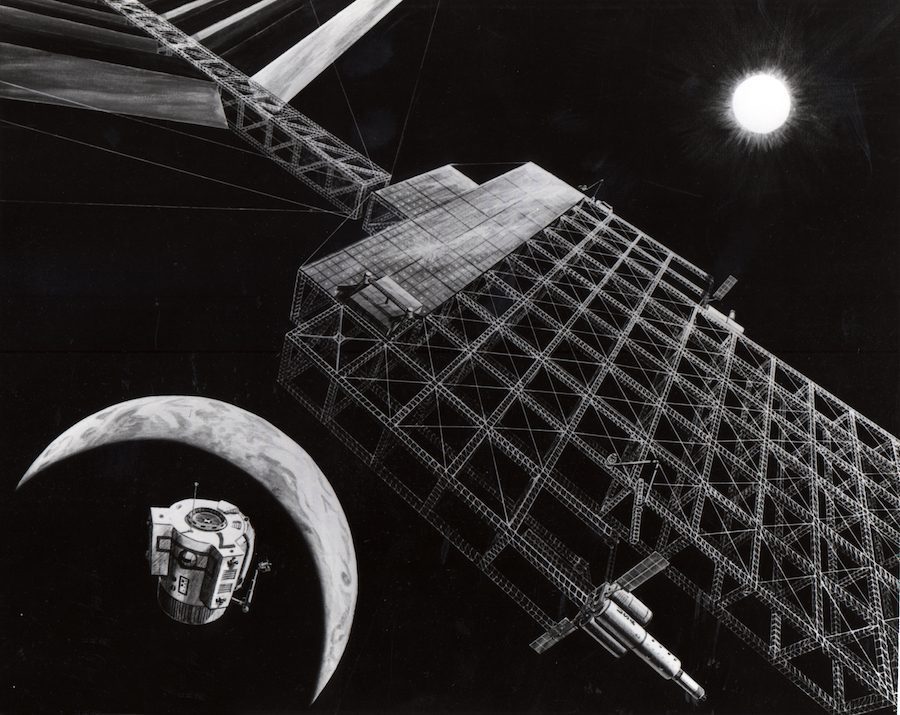
It’s no secret that the Earth is in dire need of clean energy alternatives to fossil fuels. The source of that clean energy, however, doesn’t necessarily have to be on Earth.
The Space Solar Power Initiative (SSPI) is a team of scientists from Caltech that includes researchers from NASA’s jet propulsion laboratory. These scientists propose building the largest-ever space structure to generate electricity using solar power — harvested in orbit.
Tapping into space-based power
The amount of solar energy that is available in space exceeds the amount we use here on Earth today by billions of times.
Additionally, one of the most common arguments against solar power — that it isn’t reliable since the sun doesn’t generate power at night or on cloudy days — is completely invalid in space. The sun is literally always out in full force.
There is also the fact that certain additional wavelengths of sunlight typically absorbed by our atmosphere before they reach ground-based solar panels could be absorbed by space-based panels, adding to the amount of energy we would be able to harness.
Space Solar Power (SSP), also called Space-Based Solar Power, gathers energy directly from sunlight in space, then transmits it back to earth wirelessly in the form of microwaves.
Those waves would then be received by antennae on the ground, which can be installed virtually anywhere so as not to displace other productive land use. They could take the form of wires that could share space with agricultural fields, for example.
The energy solution we need
Harnessing SSP would be an enormous step in the right direction if we are truly serious about solving our greenhouse gas emission problems. The environmental impact of power stations in space would be minimal.
We have long known the benefits of solar energy — and the list keeps growing! On top of being eco-friendly, solar energy is cheaper, more sustainable and more convenient than traditional energy sources.
Space solar power is by far the largest potential source of energy for Earth, and it is routinely used to power nearly all spacecraft today. This includes satellites we send to collect data about our solar system, as well as the International Space Station, where orbital research requires energy on a daily basis.
Our homes are already moving toward the use of solar energy. As it stands, our transportation system has the potential to move away from fossil fuels as well, with hybrid and full-electric technology on the rise. But we will need huge quantities of energy to make a full transition.
If we begin to use this technology on a larger scale, we could provide energy to every person on Earth in large quantities for a very long time — especially those in remote areas who lack a sufficient energy infrastructure.
It won’t be easy — but we can do this
Believe it or not, this idea has been seriously discussed for decades. The main reason it hasn’t had much headway is that, in the past, it would have been far too expensive to launch this type of technology into orbit.
Nowadays, though, technological innovations are making materials and production more affordable. SSPI is leading the pack with ultra-lightweight structures.
SSP would become a new industry, requiring operational crews on the ground to “steer” these lightweight spacecraft and keep them on course to maximize the energy they absorb and beam back. Telerobotics operators would also need to be on hand to make repairs remotely.
Because it would take so many panels to power the entire world, another option for getting these structures into space would be to forego the process of launching them all into space. One proposal is building a single large solar panel — one programmed to make copies of itself — and then launch those copies by itself. The number of panels would then grow exponentially without the need for costly launches or spending on fuel.
Yet another option is to send such a machine to the moon, where robots could mine for minerals such as aluminum, iron, and silicon in order to construct parts for additional satellites. Once built, these satellites could launch themselves from the moon’s lower gravity into Earth’s orbit and begin beaming solar energy to the ground.
Working toward a sustainable future
The possibilities are limitless, and great minds like those at SSPI are always innovating. SSP is one of our best hopes for an energy-sustainable future — perhaps one day it will be our reality.
 Bobbi Peterson loves writing and regularly posts on her blog Living Life Green. She’s also a freelance writer, green living advocate, and environmentalist. You can find more from Bobbi on Twitter.
Bobbi Peterson loves writing and regularly posts on her blog Living Life Green. She’s also a freelance writer, green living advocate, and environmentalist. You can find more from Bobbi on Twitter.


